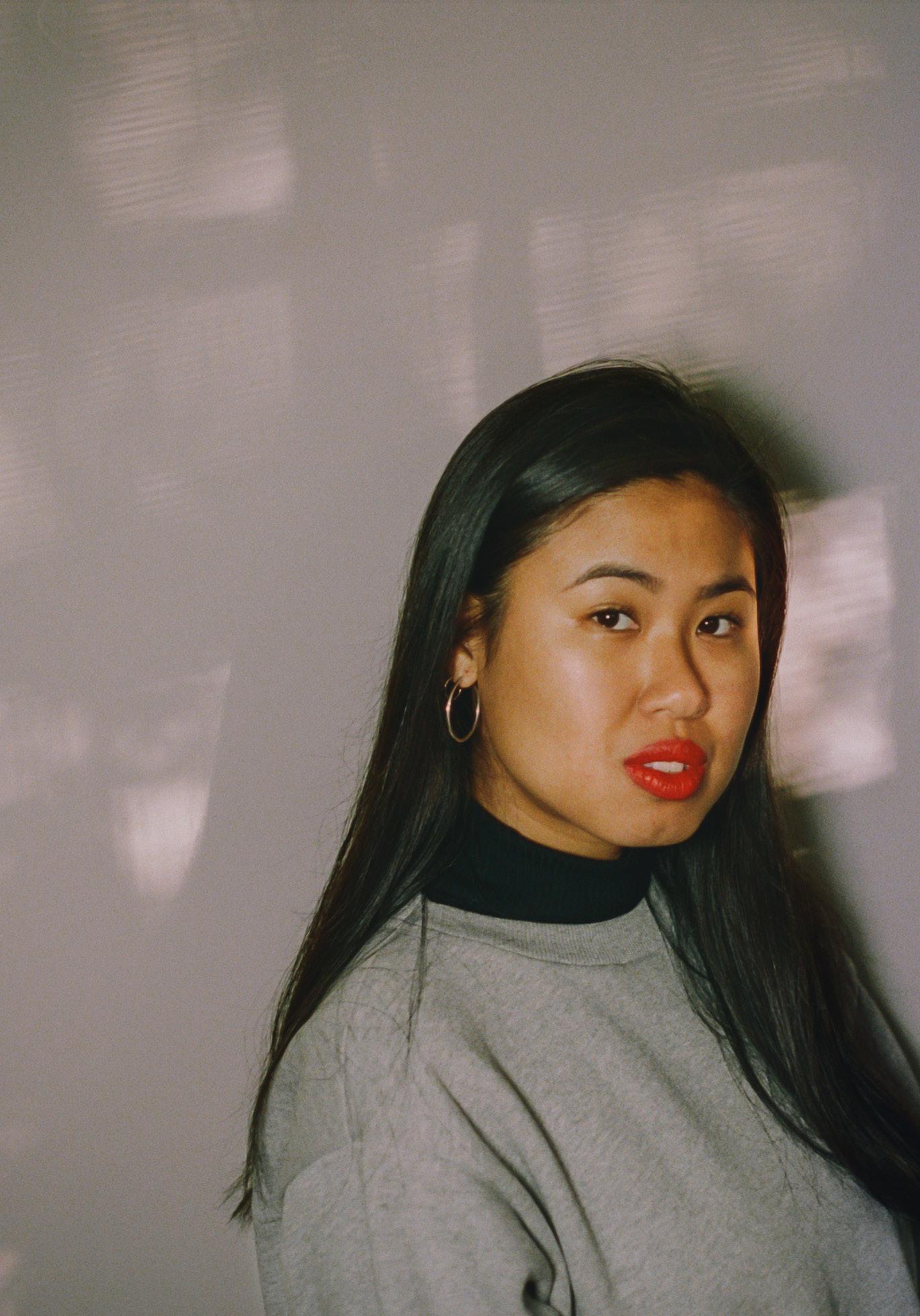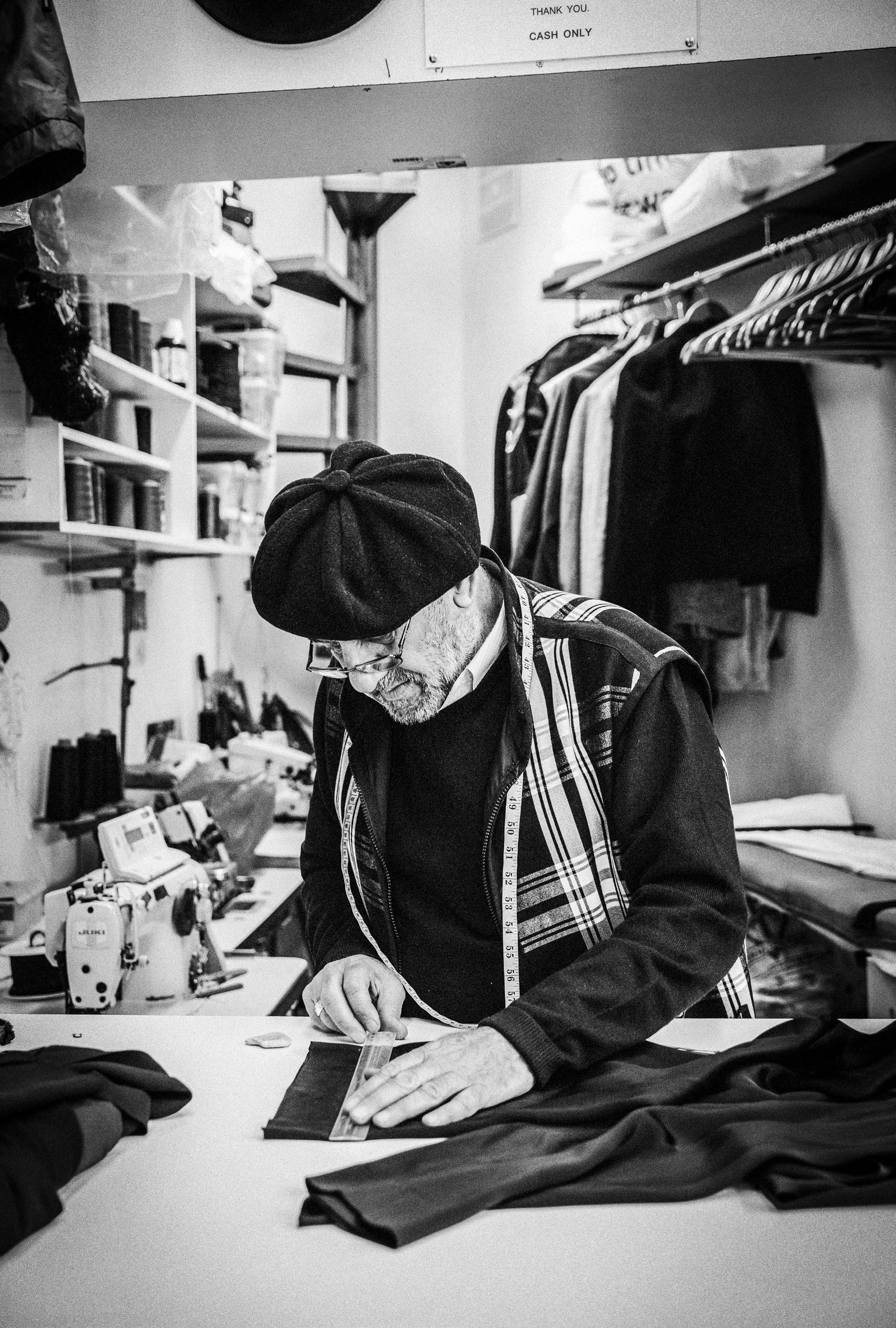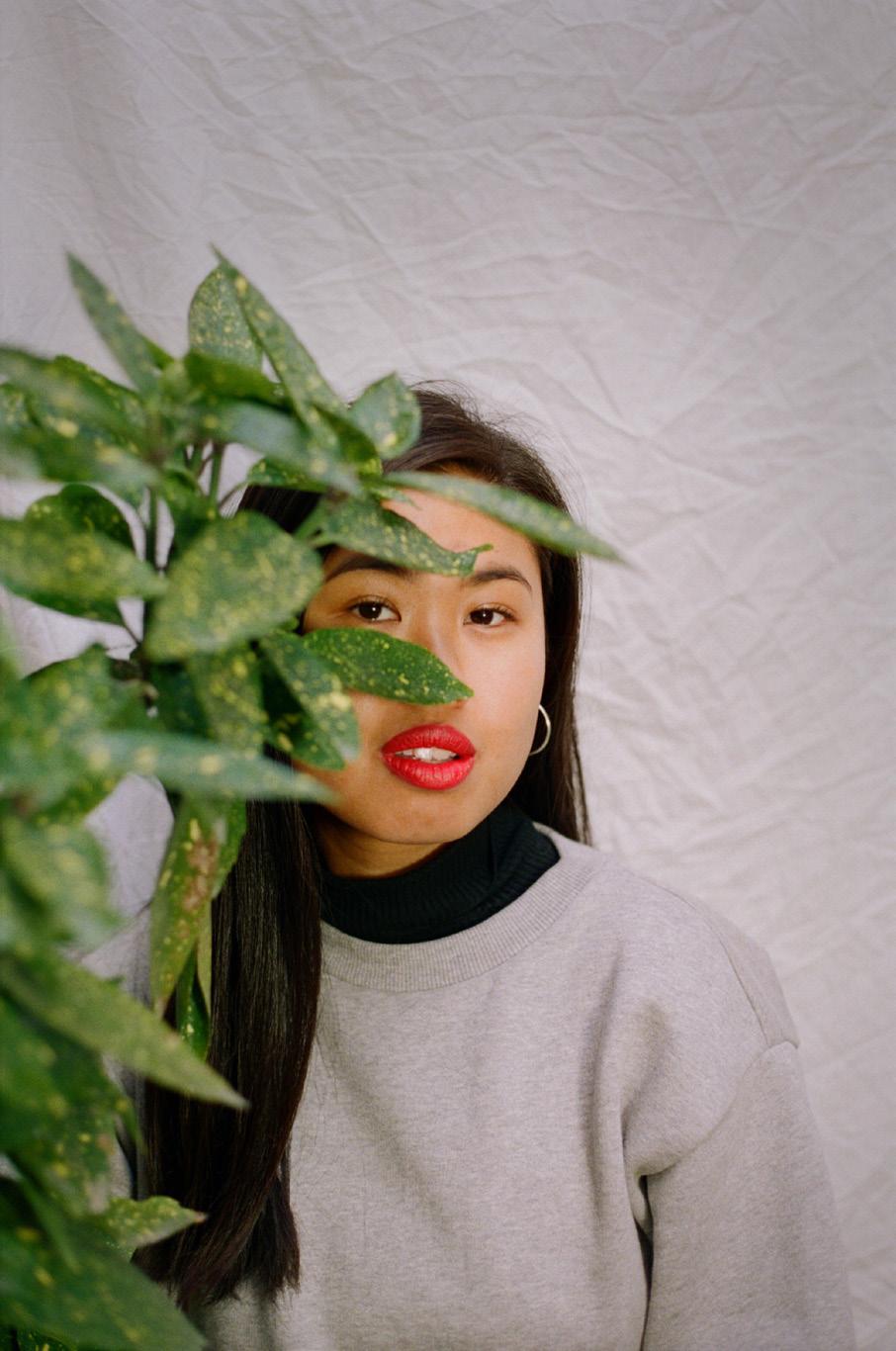
10 minute read
How To Have An Ethical Wardrobe And Not Look Like The Kid From About A Boy
Words By Isabelle Landicho Photography By Charlotte Ellis

We are all exposed to the consequences of climate change: the death of coral reefs, Arctic sea ice loss, biodiversity loss, more heatwaves, heavy rainfall - and its threats feel more potent than ever. What many might not be aware of, is that the fashion industry is one of the most environmentally damaging industries globally, and an urgent transition is required to limit its effects. Isabelle Landicho, London based Stylist and Art Director, as well as The Earth Issue’s Fashion &Lifestyle Editor, champions diversity, green fashion and creates beautiful imagery combining the two. Sharing her story in how her interest in green fashion started, she provides useful tips on how to shop consciously, and reduce your impact on the world without having to compromise your sense of style:
My journey began after converting to a plant-based diet for political reasons a couple of years ago. I couldn’t hold such strong environmental values in regards to my diet, yet overlook the problems that lie within the fashion industry - especially since I directly contributed to it. I started to educate myself; I read books like To Die For by Lucy Siegle, I watched documentaries such as The True Cost, I attended talks and formed my opinion about it all. The issue was personal for me too. I grew up in the Philippines and I identify with the struggles of the people of a developing nation - it could’ve been me who was exploited, or a sister or a cousin. I couldn’t feign ignorance and continue contributing to the fast- fashion epidemic, so I decided to act on it. In 2015 the production of polyester released 706 billion kg of greenhouse gases, the equivalent of 185 coal-fired power plant’s annual emissions. It takes 2,7000 litres of water – what one person drinks in two and a half years- to produce a single cotton t-shirt.
In 2013, 1,021 garment workers were unjustly killed in the Rana Plaza disaster due to hazardous working conditions even after health and safety concerns from the victims. What many people don’t realise is that the seeming bargain they picked up on the high street comes with a hefty price tag.
It’s easy for us to disparage and have the notion that a single person cannot affect change, but if every person decided to demand more responsibility and transparency from our retailers just imagine what could transpire. Green fashion brings to mind a certain aesthetic, albeit not a very glamorous one. But at the end of the day styling, oneself is an act of self- expression and self- love. Now more than ever are masses of alternatives to fast fashion brands and some of them indeed very glamorous.
Here is my guide on how to have an ethical wardrobe. Some of these are small things anyone can do, start with one or two adjustments, and maybe you will find that gradually you’ll want to make more green lifestyle choices. The smallest change can give way to the biggest of impacts.

Repair your clothes
This is one of my easiest and cheapest ethical fashion tips. 60% of all clothing produced ends up in incinerators or landfills within a year of being made. I have well-worn items of clothing that I love, instead of discarding these pieces that have served me so well I feel I owe it to the clothes to repair them. My favourite tailor is Mr Moustache Tailoring on Kingsland Road (London). He once told me he is a professor and upon receiving back a bag of trousers that were all too big and now fit me perfectly I am inclined to believe him.
It’s also very easy to mend your own clothes. You don’t need to own a sewing machine or be the most technically skilled, it just takes time and effort. Look up tutorials on YouTube for trickier sewing processes, dye faded items, sew darts on bottoms that are too big on the waist yet loose around the bum, take shoes to the cobbler, even the small things like darning old socks make a difference.
Buy second hand
Doubling the life of clothing from one to two years reduces emissions over the year by 24%, as does buying second-hand clothes. There are so many options of buying preloved clothing that go beyond the guise of vintage, you can buy anything from high street brand clothes to luxury items if you know where to look.
Frequent your local charity shops or go on an excursion with friends to fancy parts of London (or wherever you are based) and scout the charity shops there- fancy people often donate fancy clothes. If vintage fashion is your thing, there are great shops in Central London like Rokit, Wow Retro, Vintage Showroom and Beyond Retro. Alternatively, there are great sites online beyond the usual yet still commendable eBay, Depop and Etsy. Vestiaire Collective is my destination of choice for second-hand designer goods, each item has to be thoroughly inspected before sold to approve its authenticity and quality. Rebelle adheres to the same guidelines, and Hardly Ever Worn It has a handy Kids section. Cult website Grailed offers the latest in men’s fashion and streetwear, it’s pretty much made for you if you are of those people who queue up to buy trainers.
A friend of mine hosted a clothes swap party recently, which are a fun and resourceful way to exchange your pre-loved items for other people’s treasures. My friend and ethical fashion consultant Emma Slade-Edmondson have hosted many clothes swap events in the past, look for one near you or hold your own!


Shop smart and demand more
I am a believer that we as consumers hold more power than we give ourselves credit for, brands would be unable to make a profit without demand, Adidas and G-Star RAW have developed apparel made from ocean plastic, with Adidas selling over a million from its Parley range in 2017. With this said, brands are quick to cash in under the pretence of sustainability but these initiatives are ethical only at surface level- this is called greenwashing. Just because a swing tag reads 100% cotton doesn’t make it ethical or even sustainable; in fact, cotton is one of the thirstiest crops on the planet. Nor does a piece of upcycled or repurposed clothing mean that the garment worker who made it was paid a fair wage. Fashion Revolution is a global movement demanding companies for radical transparency with their hashtag #whomademyclothes?
Do your research before you invest in something. My go-to shopping aid is the extremely user friendly, Good on You app. You can search the brand and the app gives you a rating out of five along with a short evaluation, suggesting similar, yet more ethical brand alternatives. There is also an option at the end of the page for you to e-mail the brand to give positive feedback, urge them to do better, or to ask a question which makes for easy and much needed dialogue between consumer and company.

Buy from ethical designers
By making educated choices that align with our ethics, we can bring about positive social and environmental change. Public interest in mindful living has led to an increasing number of socially conscious businesses, each of them with their own set of morals and ideals. By supporting these companies, we are not only purchasing a great product but doing our part for the planet and its people. Buy from ethical designers
At times people are deterred by the price of ethical fashion; some garments are indeed pricier than their high street counterparts but don’t forget: better quality materials equate to longer lasting products that are more value for your money in the long run. It’s an added bonus if these materials are not made at the cost of our earth, oceans and animals. Personally, I would rather spend a bit more money on a top if it means that the people who made it are paid fairly and work in safe conditions. We often forget that the people making our clothes are individuals, like you and I; people with lives, families, friends, dreams and ambitions- let's use our privilege to honour and respect this.

1Piece of Clothing

Multiple Outfits

Here are some of my favourite green fashion brands:
Everlane
American brand Everlane is your go-to for great quality basic items to build a capsule wardrobe - one of my most favoured labels. With a focus on radical transparency, they “reveal the true costs behind all products, from materials to labour to transportation.” Everlane also meticulously evaluates their factories to ensure their garment workers have fair wages, reasonable hours and a safe working environment. They ship worldwide on orders over $100, but if you’re buying from the UK be wary of the additional tax. I recommend doing a big order at the start of every season to update your wardrobe (if it needs it!) and sharing your order with a friend to reduce shipping and tax costs. https://www.everlane.com/
Know the Origin
Know the Origin is an independent British brand that was rated in 2018 by Ethical Consumer as their number one most ethical company which is no mean feat. As well as selling their in- house line, they also feature a variety of ethical brands from eco-soy candles to cork accessories. They seem to have thought of every process in the supply chain and ensured it is as ethical as can be for people, our planet and made for a purpose: “We pride ourselves in being the most transparent, right down to pictures and images of that product being made in the factory, then listing all of our supply chain: the farms, jinners, the spinners we work with, the knitters, the dyers. We work with a zerowaste dyeing unit in India, and just always look for producers that are doing things differently and share our value”. https://knowtheorigin.com/


Elliss
In an online interview with The Earth Issue, London-based brand Elliss states that all their products are manufactured in the same building where they design, using organic and recycled materials, “All packaging is recycled, from the hangtags to the tissue paper and envelopes the orders are sent out in.” The brand distributes their online orders from their studio in Hackney and sells to a select few shops globally. Elliss (on her namesake label) contemplates, “I try and make conscious decisions all the time, from the tape I buy to seal the boxes to the clothes themselves. It is a natural process for me as I don’t like to be wasteful.” As well as being a conscious brand, they provide us with beautiful, interesting clothes and undergarments with sophisticated shapes and a slight noughties aesthetic. https://www.elliss.co.uk/
Rêve En Vert
Rêve En Vert is an online retailer that champions sustainable luxury and hold their designers to four tenants: “organic, re-made, local and fair.” Their ethos reads that they demand “quality style made from a place of consciousness... committed to driving awareness of how consumers think about the fashion industry, exclusively featuring designers who operate their businesses with respect for people and the planet.” What’s special about this brand is that they feature extensive high-end product lines that range from conscious beauty to ethical homeware, and is exemplary proof that eco-fashion is beautiful, luxurious and indeed covetable. https://reve-en-vert.com
What's your legacy
Not technically a fashion brand- but I swear on What’s your Legacy's ethical fashion and beauty directory. What’s your Legacy is “an online platform exploring sustainability and innovation in fashion industry”. They are committed to curating the best green labels and interview designers, create editorials and offer consultations on how companies can be more sustainable. The directory is separated in different categories like eyewear, bridal and high to low price range, meaning there’s something for everyone. Once a brand is selected it takes you to a page with a brief description of their ideals and informs you of their sustainability labels: i.e. if a brand uses “low impact synthetic dyes” or if they use “organic, GOTS certified cotton”. What’s your Legacy is a site that is fun, pleasing to the eye and extremely detailed- not to mention its run entirely by women. If you’re looking to start your venture into ethical fashion I highly suggest you start with this website. https://wylstore.com/
THEEARTISSUE










